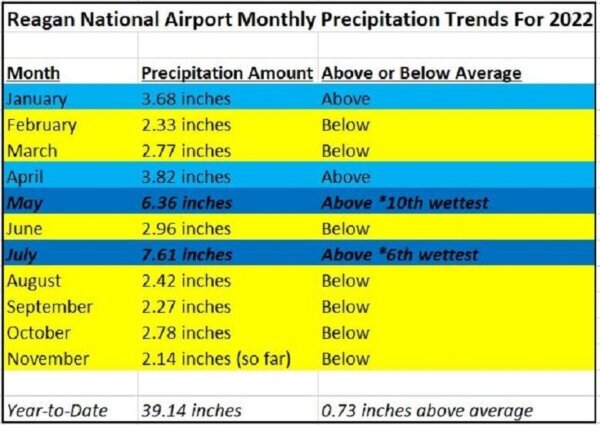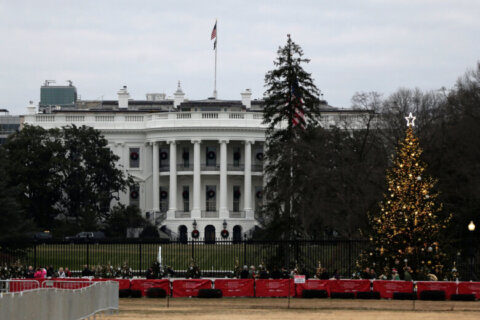Mother Nature has just about balanced out the wet and dry months this year in Washington. Believe it or not, precipitation totals are about as close as they can get to average.
Climate averages are calculated every 10 years and include the last 30 years of data. The most recent climate averages were refreshed in 2021 and included data from 1991-2020. This helps the National Oceanic and Atmospheric Administration keep tabs on 10-year temperature and precipitation trends for cities across the U.S.
- More Weather News
- More Local News
- Listen to WTOP online and on the radio at 103.5 FM or 107.7 FM.
- Sign up for WTOP alerts
While precipitation averages are merely a gauge for meteorologists to determine if a deluge could produce flooding or how much rain is needed to make up for a long-term deficit, it’s rare for an entire year to be “average” in one location. Typically, there is an imbalance of precipitation at some point during the year that tips the scale in favor of a wet or dry year.
With just more than a month to go, the D.C. area has seen 39.14 inches of precipitation, which includes rain and melted snow and ice. The average precipitation for Reagan National Airport in a calendar year through the end of November is 38.41 inches. This means the entire year up to Nov. 25 is only 0.73 inches above average.
To get to this point, rainfall didn’t come with an equal distribution. May and July ranked in the top 10 for the wettest fifth and seventh months of the year respectively and helped offset the dry periods early this summer and through the autumn season.
Below is a table that shows a breakdown of the monthly precipitation at Reagan National compared to the average.

In the near term, today’s rain is trivial, but Sunday offers more appreciable amounts with the next chance during the middle of next week.
So, what will it take for D.C. to have a perfect scorecard for 2022? December would have to be drier than average. Another 2.68 inches of a combination of rain and melted snow and ice will place totals for 2022 exactly on track with the annual average of 41.82 inches.
Unless December is a big overachiever or underachiever for precipitation, it will go down as an average year for precipitation in Washington. Precipitation totals plus or minus an inch for an entire 365-day period is considered on par with average given it’s a longer-term trend. Looking into December, there is no strong signal for a wet (snowy) or dry month in Washington.
If you are keeping score at home, only three other years in Reagan National’s weather records have seen almost exactly average precipitation. Those years include 2019, 1961 and 1944. 2022 could very well join those ranks.








